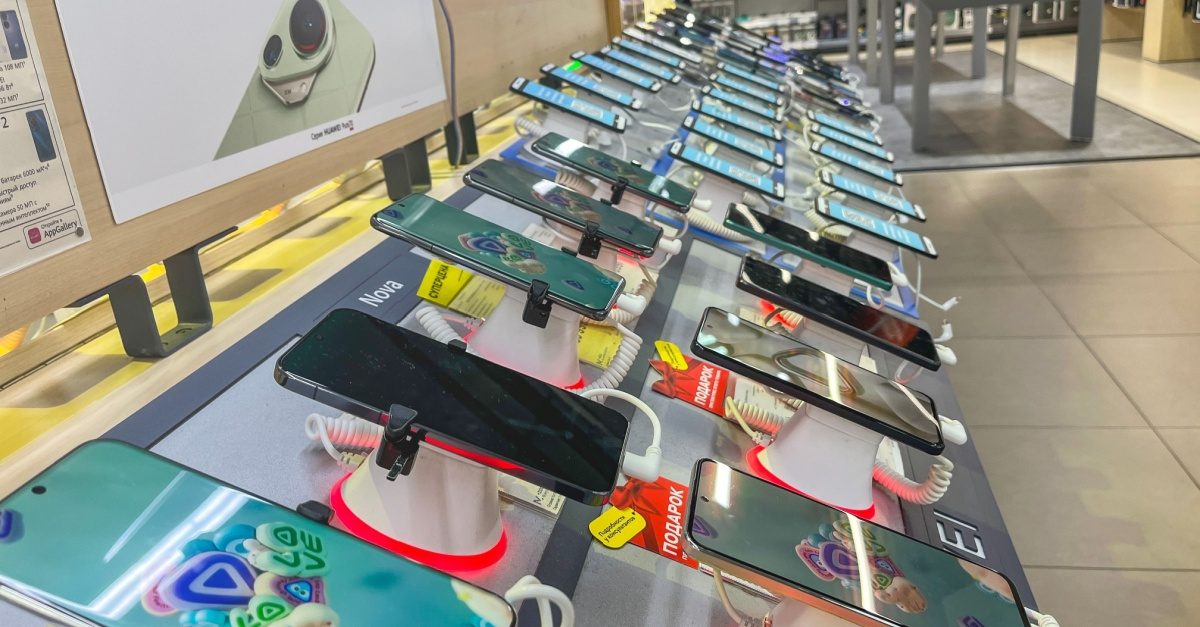
Smartphones: Understanding the recycling process
In modern times, almost everyone has a smartphone. In fact, research suggests that there are over 7.21 billion smartphones in operation, meaning if that number related to one phone per person, then around 90% of the global population would be utilising a smartphone.
Modern phones are, for many of us, a crucial part of everyday life, with us relying on them for work, social purposes, and so much more. With new, more advanced and capable models of phones being released frequently, millions of phones are no longer required every year. As this number continues to grow, so does the need for us to find ways to dispose of our old devices. In this article, we look at why it is important to recycle smartphones and the stages of the recycling process.
Why should I recycle my smartphone?
Choosing to recycle your smartphone, rather than throwing it away at the end of its lifecycle, helps to keep the tech industry more sustainable by reducing the carbon emissions associated with the manufacturing, usage, and disposal of digital devices.
While we know it’s the more sustainable option, what most of us don’t know is exactly what happens to our old devices when we choose to recycle them. To help you get a better idea, here’s a breakdown of each step in the smartphone recycling process.
Collection and sorting
First, the smartphones are collected. Old devices are typically received through e-waste recycling programs, trade-in offers, or drop-off points at electronics stores. Once collected, any smartphones that are still functional and have potential resale value might be refurbished and sold on, while unusable devices are sent directly to the recycling facilities.
Data destruction
Before the recycling process can go ahead, protecting user data is a priority. To ensure privacy for the previous owner of the smartphone, all personal data stored on it is erased or destroyed prior to it being dismantled – this might include wiping data using specialized software, or physically dismantling and shredding the storage components, such as memory chips. By doing this, those responsible for disposing of the devices ensure that no sensitive information remains in relation to the previous owner.
While your data should be safely destroyed if you choose a reputable and responsible recycling programme, it’s important to remember that the entire contents of your smartphone will be in someone else’s hands once you’ve parted with it. For this reason, you may want to take steps to remove and protect your data yourself prior to relinquishing your smartphone.
Dismantling and component sorting
Once any personal data is removed, the dismantling process can begin. The smartphones are disassembled into their individual components, such as screens, batteries, circuit boards, and outer cases. Skilled workers or automated machines perform this step, carefully separating parts so that each component can be recovered effectively. For example, batteries – which contain hazardous substances like lithium and cobalt – are removed and handled separately to prevent contamination of the other parts of the smartphone.
Material recovery
Once each of the components are separated, the focus shifts to recovering valuable materials – gold, silver, palladium, copper, and other rare earth elements can all be recovered from smartphones. Advanced techniques are used to extract them, such as smelting or chemical processes, which then make them available for future manufacturing. Similarly, plastics and glass, which are commonly found in smartphone cases and screens, are also processed for reuse in new products.
Reuse in manufacturing
Finally, the materials recovered from the recycled smartphones are reintroduced into the supply chain. Precious metals may be used to manufacture new electronics, while plastics and glass are repurposed for various other industries. By reusing these recycled materials, manufacturers can reduce their reliance on non-renewable resources, decreasing the environmental impact of mining for precious minerals and other extraction processes.
Why does recycling matter?
Recycling smartphones isn’t just about recovering materials or reducing e-waste – it also has broader environmental and societal benefits. By recycling, we reduce the demand for mining raw materials, which can be destructive to natural ecosystems. Additionally, the energy saved through recycling helps lower greenhouse gas emissions. When done responsibly, smartphone recycling also creates jobs and supports the circular economy.
Currently, only around 15% of smartphones are recycled in developed markets. However, if consumers have a better understanding of what happens to a recycled smartphone, and understand why the process is important, we’re likely to see this figure grow – and the industry become more sustainable and eco-friendly as a result.
Author bio: Joe Lucas
Joe works in tech and is passionate about all things eco and sustainability. He takes part in various initiatives to promote the use of recycling practices in a circular economy.
The Sustain Chain Awards celebrate sustainable improvements, green initiatives, ways to recycle, reduce, reuse and so much more. Help us celebrate success by submitting a nomination for yourself, your organisation or someone in your wide network who is committed to making a change! Nominations are free, quick and easy. CLICK HERE to find out more.

